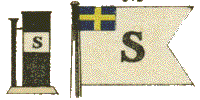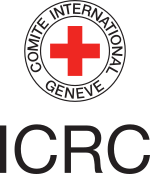SS Vega (1913) facts for kids

Stockholms rederi ab Svea
|
|
Quick facts for kids History |
|
|---|---|
| Name | Vega |
| Owner | Svea |
| Operator | Svea |
| Port of registry | Stockholm, Sweden 5447 |
| Route | Baltic and North Sea |
| Builder | Lindholmens Verkstads AB |
| Cost | SKR 375,000 |
| Yard number | 411 |
| Launched | 18 March 1913 in Gothenburg |
| Completed | April 1913 |
| Out of service | 1954 |
| Captured | 1939 and released |
| Fate | Scrapped Travemünde 22 May 1954 |
| Operator | Red Cross 1939-1945 |
| Acquired | December 1939 |
| In service | December 1939 – June 1945 |
| General characteristics | |
| Type | Steamship |
| Tonnage | 1,073 GRT |
| Length | 226 ft 4 in (69 m) |
| Beam | 25 ft 1 in (7.6 m) |
| Draught | 14 ft 4 in (4.4 m) |
| Installed power | steam engine |
| Propulsion |
|
| Capacity | 66,550 cu ft |
| Crew | Maximum of 21 |
The SS Vega was a steamship owned by a Swedish company called Svea. This company had been operating steamships since 1886. The Vega was built in Gothenburg, Sweden, and was ready for use in April 1913.
It ran on coal and could carry enough fuel for 16 days of travel. The ship had four cargo openings, each with a steam-powered crane that could lift up to 3 tons.
Contents
Early Life of the Ship
The Vega's first captain was John Borg. The ship sailed to Düsseldorf, which meant it needed a special smoke stack that could be made shorter and masts that could fold down. This was to fit under bridges. In September 1914, Captain G. Flygare took over. After World War I, the Vega sailed routes across the Baltic Sea and the North Sea.
On September 16, 1939, the Vega was sailing from Finland to Hull in England. A German submarine, U-41, captured it along with another ship. The Vega was taken to Cuxhaven in Germany. There, its cargo of timber and other goods was taken because it was seen as helping an enemy of Germany. However, since the Vega was a neutral ship, it was released on October 4, 1939.
Helping with the Red Cross
In late 1939, the International Committee of the Red Cross (ICRC) rented the Vega. They used it for "relief activities," which means delivering aid. The ship was based in Lisbon, Portugal, and worked with the Portuguese Red Cross. During World War II, the Vega made 44 trips for the Red Cross under Captain Wideberg.
From May 1941 to April 1944, the Vega made 37 trips from Lisbon to Marseilles, France. It delivered supplies to the French Red Cross in southern France. After November 1942, when Germany took over southern France, the Red Cross supplies were delivered to areas controlled by Germany. One trip in November 1944 was to Toulon, France, after it was freed. Once the supplies reached France, they were put on trains and sent to Geneva, Switzerland. From there, the ICRC sent them to prisoner-of-war camps and other places where people were held across Europe.
From December 1944 to June 1945, the Vega made six more trips (Voyages 39 to 44). These trips were from Lisbon to the Channel Islands. There, the ship met with the "Joint War Organisation," which was the British Red Cross working with St. John.
First Trip to the Channel Islands (Voyage 39)
The Vega was allowed to sail to the Channel Islands no earlier than December 20, 1944. German soldiers on Guernsey saw the ship on December 27, 1944. The ship arrived at Saint Peter Port Harbour at 5:50 PM, with many local people watching.
German sailors unloaded the ship. Crowds watched as Red Cross food parcels were moved from the harbor to a storage building. These parcels, given by Canada and New Zealand, were taken on small rail trolleys to a depot. Unloading was almost finished by December 29, and the ship sailed to Jersey the next day. Unloading in Saint Helier harbor was completed by German sailors on January 3, 1945. After that, the Vega went back to Lisbon.
The ship had some damage to its bottom in Guernsey because it was put in a berth meant for smaller ships. It had to go into a dry dock in Lisbon for repairs.
The cargo included:
- 119,792 Red Cross food parcels
- 4,200 special parcels for sick people
- 4 tons of soap
- 5.2 tons of salt
- Medical supplies
- Cigarettes and some children's clothing
Second Trip to the Channel Islands (Voyage 40)
For this trip, there was a small problem. Two members of the ICRC wanted to travel, but there was only one spare cabin and one space in a lifeboat. The extra person stayed in the Captain's cabin, and the Captain agreed to have one more person than the usual crew limit of 21. The ship sailed on February 1, 1945, arrived in Guernsey on February 7, and then went to Jersey. It left Jersey on February 16 and arrived back in Lisbon on February 21.
The cargo included:
- 134,656 Red Cross food parcels
- 4,200 special parcels for sick people
- Tobacco and cigarettes
- Hearing aids
- 20 tons of medical supplies
- Seeds, shoe leather, and salt
Later Trips (Voyages 41-44)
The first three of these trips arrived while the Channel Islands were still occupied by German forces. The last trip (Voyage 44) was after the islands were freed on May 9, 1945. Each of these trips brought at least 500 tons of flour, along with fewer food parcels.
During Voyage 43, the ship was docked in St Helier, Jersey, when the island was freed from German occupation on May 9. The authorities in Jersey thanked Captain Wideberg and his crew with gifts for bringing much-needed aid to the islands.
The work of the Vega for the Red Cross, bringing parcels from Canada and New Zealand, helped save many lives.
After the War
After its 44th trip, the Vega's work with the International Red Cross ended. It sailed to London on June 11, 1945, where its Red Cross markings were painted over.
In 1946, the ship was changed in England to make the crew's living areas better. This included raising the bridge and adding more windows. The ship's size, measured in gross tonnage, changed to 1156.
By 1954, the Vega was old and had reached the end of its working life. It sailed across the Baltic Sea to Travemünde, Germany, where it was taken apart for scrap metal.
Remembering the Vega
In 1994, two special markers were put up in St Helier harbor, Jersey, where the Vega used to dock. One was shaped like a Red Cross with a "V" for Vega. A second, smaller granite marker was placed at the Jersey Maritime Museum.
In December 2004, Guernsey issued a set of stamps to remember World War II. These stamps included a picture of the Vega. In 2013, to celebrate 150 years of the International Red Cross and Red Crescent Movement, Jersey also released a set of postage stamps featuring the Vega.
Floats that look like the Vega often appear in parades like the Guernsey and Jersey Battle of Flowers, and at Liberation Day celebrations. TV shows often talk about the important Red Cross work done by the Vega.


